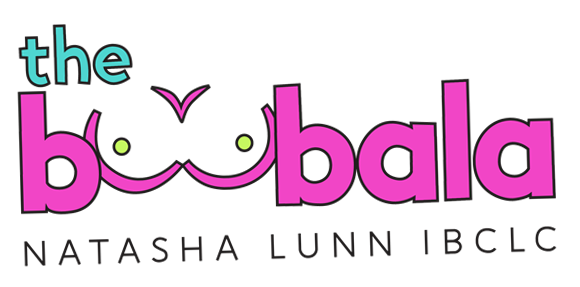Page Content
- What does thrush on nipples look like?
- How to tell if baby has thrush?
- What is the fastest way to treat thrush on nipples?
- How do you rule out thrush?
- Will breast thrush go away by itself?
- What will happen if thrush is left untreated?
- How do you test for thrush on nipples?
- How do I know if I have thrush or mastitis?
- How to tell if it’s thrush or milk tongue?
- What can be mistaken for breast thrush?
Understanding Nipple Thrush
Nipple thrush, a type of yeast infection caused by the Candida fungus, is particularly common among breastfeeding individuals. This condition can lead to discomfort and pain, making it essential to recognize its symptoms early on.
Symptoms of Nipple Thrush
Identifying nipple thrush involves paying attention to several key symptoms. Itching and burning sensations are often the first signs, which can escalate to sharp, shooting pains in the nipples during or after breastfeeding. Additionally, the skin on the nipple may appear red, shiny, or flaky, and there might be white patches that resemble milk residue but are actually fungal growths.
Another significant indicator is the presence of pain that persists even when not breastfeeding. This discomfort can be severe enough to interfere with the breastfeeding process, potentially leading to early weaning if left untreated.
Causes and Risk Factors
Nipple thrush is more prevalent in breastfeeding individuals due to the moist environment created during nursing, which can promote fungal growth. Factors such as antibiotic use, which disrupts the natural balance of bacteria and yeast in the body, can also increase the risk of developing thrush.
Diagnosis and Treatment
If you suspect you have nipple thrush, it’s crucial to consult a healthcare professional for an accurate diagnosis. Misdiagnosis is common, as many conditions can cause similar symptoms. A skilled breastfeeding supporter can help differentiate between thrush and other potential causes of nipple pain.
Treatment typically involves antifungal medications, which can be prescribed in topical or oral forms. It’s also important to address any potential sources of infection, such as ensuring proper hygiene and possibly treating the baby if they show signs of oral thrush.
Conclusion
Recognizing the signs of nipple thrush early can help mitigate discomfort and prevent complications during breastfeeding. If you experience persistent nipple pain or other symptoms associated with thrush, seeking professional advice is essential for effective treatment and management.
What does thrush on nipples look like?
Signs of nipple and breast thrush
your nipples may appear bright pink; the areola may be reddened, dry or flaky. Rarely a fine white rash may be seen. nipple damage (e.g. a crack) that is slow to heal. signs of thrush may be present in your baby’s mouth or on your baby’s bottom, or both.
How to tell if baby has thrush?
Symptoms of thrush in the baby include:
- White, velvety sores in the mouth and on the tongue.
- Sores that may bleed when wiped.
- Redness in the mouth.
- Diaper rash.
- Mood changes, such as being very fussy.
- Refusing to nurse because of soreness.
What is the fastest way to treat thrush on nipples?
The most effective treatment for topical thrush is Miconazole (Daktarin) cream (2%), which should be applied to the nipple in small amounts after every feed. In mild cases, expect improvement within a couple of days. In more severe cases, it may take 3 to 5 days or longer.
How do you rule out thrush?
If there are any white or red patches, your provider might scrape the affected area with a tongue depressor. Your healthcare provider may be able to diagnose thrush just from the appearance of the mouth lesions. But a simple lab test of the sample can also often confirm it.
Will breast thrush go away by itself?
Thrush is a yeast infection that can lead to very damaged, cracked, and painful nipples, a nursing strike, or early weaning and it needs treatment to clear up. While you can take care of some breastfeeding issues on your own, this isn’t one of them.
What will happen if thrush is left untreated?
In some cases, the symptoms of oral thrush can make eating and drinking difficult. If left untreated, the symptoms will often persist and your mouth will continue to feel uncomfortable. In severe cases that are left untreated, there is also a risk of the infection spreading further into your body, which can be serious.
How do you test for thrush on nipples?
If you suspect you or your baby has a thrush infection, see your health visitor or GP. They can arrange for swabs to be taken from your nipples and your baby’s mouth to see if thrush is present.
How do I know if I have thrush or mastitis?
Thrush will generally always be bilateral, while subclinical mastitis will usually be unilateral. The breast pain associated with thrush happens after or between breastfeeds. Breast pain caused by subclinical mastitis is usually most intense when a mother has a milk ejection reflex (MER) at the beginning of a feed.
How to tell if it’s thrush or milk tongue?
After washing and drying your hands, dampen a clean piece of gauze with lukewarm water. Wrap it around your finger and gently wipe your child’s tongue. If the residue comes off easily, your child likely has milk tongue and not thrush.
What can be mistaken for breast thrush?
Sometimes, nipple thrush pain is quite similar to other health issues – some of the most popular issues that get mistaken as a yeast infection are:
- Vasospasm/Raynaud’s Phenomenon.
- Micro-fissures due to suboptimal attachment.
- Tongue tie in baby.
- Nipple eczema.
- Bacterial infection (staphylococcus aureus possibly).

